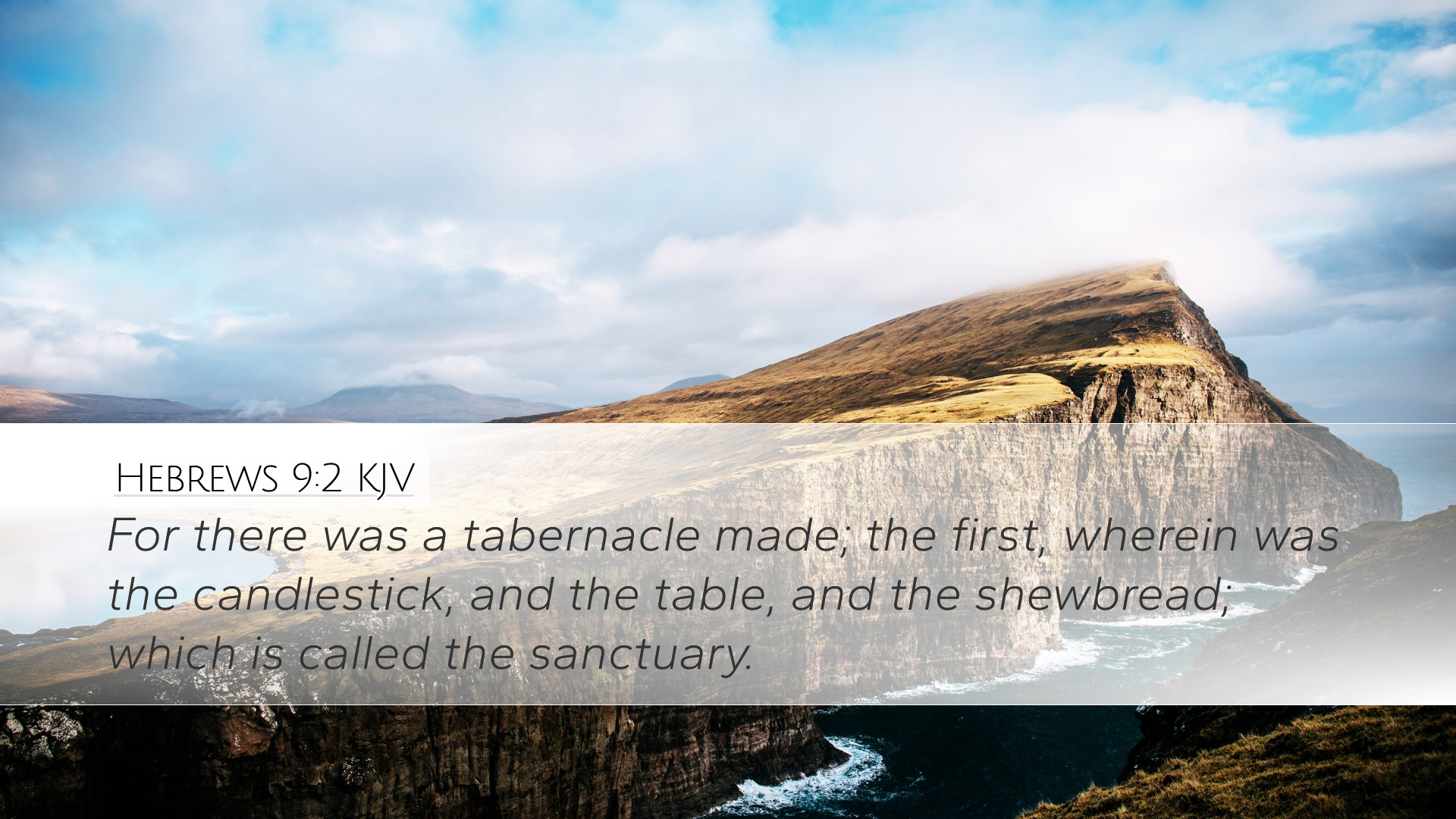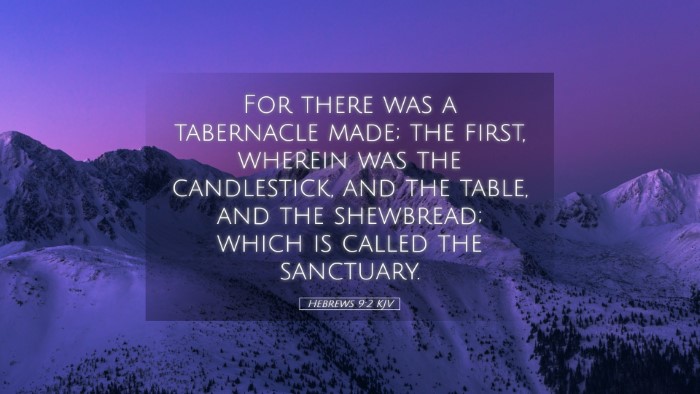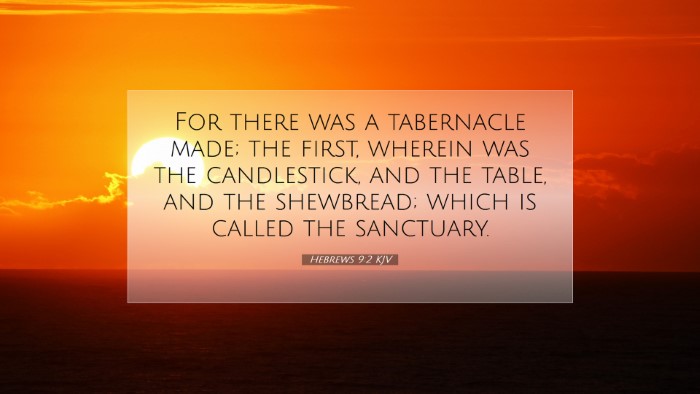Commentary on Hebrews 9:2
Bible Verse: Hebrews 9:2 - "For there was a tabernacle made; the first, wherein was the candlestick, and the table, and the shewbread; which is called the sanctuary."
Introduction
The Book of Hebrews offers a profound theological discourse on the nature and significance of the new covenant through Christ Jesus. In examining Hebrews 9:2, we find the author referring to the structure of the earthly tabernacle, drawing parallels that elucidate the transition from the old covenant to the new.
Contextual Background
This verse sits within a larger section discussing the priesthood and sacrificial system of the Old Testament. The author of Hebrews emphasizes how the earthly tabernacle served a temporary purpose, contrasting it with the heavenly ministry of Christ. As such, Hebrews 9:2 lays the groundwork for understanding the significance of the items within the tabernacle, which serve as types and shadows of Christ and His sacrificial work.
Insights from Commentaries
Matthew Henry's Commentary
Matthew Henry states that the description of the tabernacle is crucial to understanding Jesus' fulfillment of the Law. He highlights the inner sanctum, where the candlestick, table, and showbread were placed, noting these elements symbolize Christ as the light of the world, the bread of life, and the sustainer of the covenant relationship between God and His people.
Henry underscores the transition from the earthly to the heavenly tabernacle, asserting that the presence of God was confined to the earthly tabernacle, but now resides in the hearts of believers through the Holy Spirit.
Albert Barnes' Notes
Albert Barnes emphasizes the physical aspects of the tabernacle mentioned in Hebrews 9:2. He explains that the tabernacle was a finite structure designed according to divine specifications. Each furniture piece served a particular ritualistic function that pointed to Christ's ultimate sacrifice.
- Candlestick: Represents the illumination provided by Christ, who abolishes spiritual darkness.
- Table: Symbolizes the communion or fellowship believers have with God, sustained through Christ.
- Shewbread: Demonstrates Christ as the sustenance for spiritual life, echoing His declaration of being the bread of life.
Barnes points out that this verse illustrates basic elements necessary for approaching God, which are fulfilled in the person of Christ, indicating that the old ceremony was only a shadow, while the new covenant is the reality.
Adam Clarke's Commentary
Adam Clarke provides a detailed examination of the tabernacle's construction and its significance. He notes the detailed architecture underscores God's desire for fellowship with humanity. Clarke explains that the physical aspects signify deeper spiritual realities.
- Clarke believes the candlestick reflects divine guidance, symbolizing the Holy Spirit's illumination.
- The table of showbread is a constant reminder of God's provision and His covenant promise.
- The term sanctuary denotes a holy space, pointing toward the ultimate sanctuary in heaven, which the earthly one foreshadows.
Emphasizing continuity in Scripture, Clarke argues that while the Old Testament rite illustrated God's presence, in Christ, we experience God’s intimate presence directly. The transition from the shadow to the substance represents the evolution of redemptive history.
Theological Implications
In Hebrews 9:2, the reference to the tabernacle reveals key theological themes:
- Temporary vs. Eternal: The earthly tabernacle was temporary; Christ offers a permanent solution to humanity's sin problem.
- Obedience and Sacrifice: The tabernacle served as a reminder of the sacrificial system, which finds fulfillment in Christ's ultimate sacrifice.
- God's Desire for Relationship: The setup of the tabernacle highlights God’s longing for fellowship with His creation, which is fully realized in the incarnation of Christ.
Practical Applications
For pastors, students, and scholars, Hebrews 9:2 offers rich insights for application:
- Encouragement in Worship: Recognizing the depth of the symbols within the tabernacle can deepen worship experiences, highlighting Jesus as the light, bread, and sustainer.
- Understanding Fellowship: The model of the table of showbread teaches the importance of spiritual communion within the faith community.
- Reflection on Redemption: The transition from the Old Covenant to the New is foundational for understanding the nature of redemption and grace in teaching and discipleship.
Conclusion
Hebrews 9:2 serves as a gateway into understanding the significance of the Old Testament tabernacle in light of Christ’s new covenant. By examining its elements through the insights provided by Matthew Henry, Albert Barnes, and Adam Clarke, we gain a clearer understanding of how this scripture reveals key aspects of God’s redemptive plan. This verse not only contextualizes the Old Covenant but also highlights the ultimate purpose and fulfillment found in Jesus Christ.


